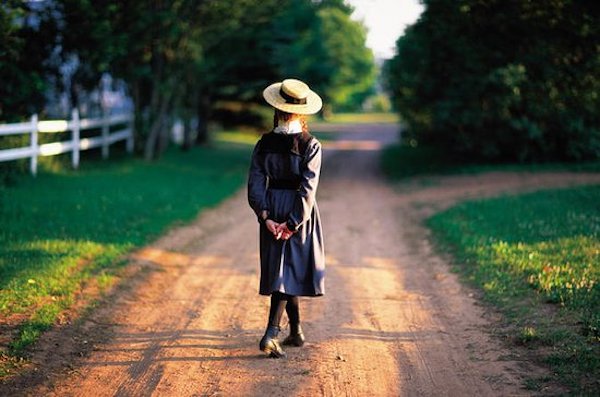Often a
measure of a novel’s success, in its depiction of a particular place,
occurs when readers feel they know it, they recognize it, or, better
yet, they want to visit. Such has been the case with the perennial
favorite, Anne of Green Gables. Since its publication in 1908,
fans of Anne Shirley have sought out the small island in eastern Canada,
keen to meet the character and tour the landscapes she made
memorable—The Lake of Shining Waters, the Haunted Wood, Lover’s Lane,
the Birch Path. Like the free-spirited Anne, who loves and names almost
every tree and flower she encounters, they, too, want to know the place
that had such an influence on her. For lovers of the Anne novels (Maud
Montgomery wrote an additional seven for the series), much of the magic
seems rooted in the very land Anne roamed.
Visitors to Prince Edward Island will
find much to love in its natural beauty—a narrow strip of rolling hills
in the Gulf of St. Lawrence, with lush fields, quiet coves, and miles of
white sand beaches. But its pastoral, timeless feel can’t quite explain
its powerful draw. While the summers are mild, its winters are long,
and two of the primary industries—fishing and agriculture—can be tough
to pursue at any time of year. Yet tourism, the second most important,
remains strong, with hundreds of thousands of visitors arriving every
year to experience the same sites that were such a part of Anne
Shirley’s adventures.
It is, in many ways, an odd phenomenon, a
balancing act between the real and the fictional that Canada’s National
Park Service, among others, helps sustain. In the town of Cavendish
(“Avonlea” in the novels), in the house known as Green Gables, visitors
can see the rooms where Anne and Matthew and Marilla slept; they can
walk the same paths, cross the same streams and inhale the same
fir-scented air. Along the
way, they can relive some of Anne’s more memorable moments—scaring
herself with Diana in the Haunted Woods, welcoming spring with her
schoolmates on a mayflower picnic, accepting Gilbert’s offer of
friendship on an evening stroll as the novel concludes. And yet these
are all imagined events, superimposed on the PEI canvas—until one
reads more about Montgomery’s life. There, in the pages of her
journals, which were first made available to the public in 1985 (edited
by Mary Rubio and Elizabeth Waterston), is where the real and the
fictional intersect.
Though Montgomery insisted that Anne wasn’t based on anyone she knew—“I have never
drawn any of the characters in my books ‘from life,’” she writes,
“although I may have taken a quality here and an incident there”—her
journals suggest otherwise. Reading them alongside Anne of Green Gables
is to see the many similarities between the young Maud and Anne. Both
were raised by elderly people after losing their parents (Maud’s mother
died when she was young and her father left her with her grandparents
before moving to western Canada). Both had vivid imaginations and the
same seen-only-by-them friends (Katie Maurice, Violetta). Both gave
similar names to their favorite places to walk (Lover’s Lane, the Birch
Path), and both saw trees and plants as sensate beings who welcomed a
greeting after time spent apart. Anne is, in many ways, an idealized
version of the young Maud, completely at home in and energized by the
natural world. As a result, her presence is far larger than that of
simply fascinating, charismatic girl; she embodies the very stuff of
life, as in the epigraph from Robert Browning that Montgomery used for
the novel—“The good stars met in your horoscope / Made you of spirit and
fire and dew.” ... [mehr] https://lithub.com/on-the-magical-landscapes-of-anne-of-green-gables/

Keine Kommentare:
Kommentar veröffentlichen